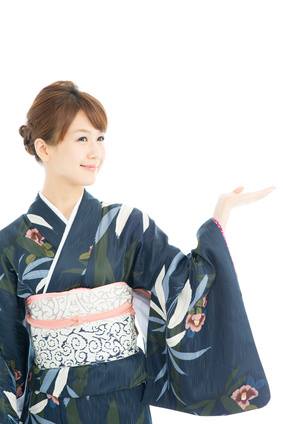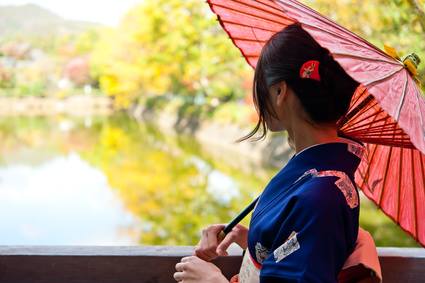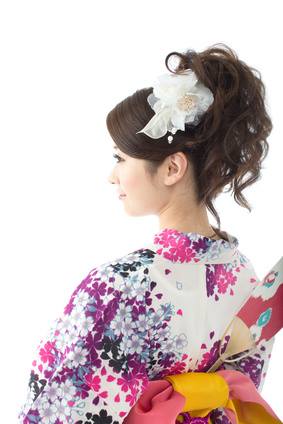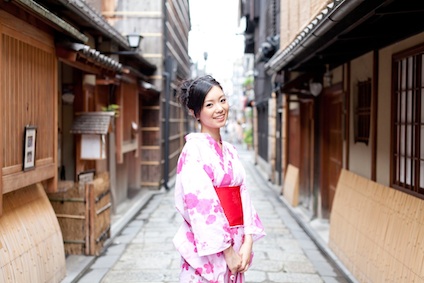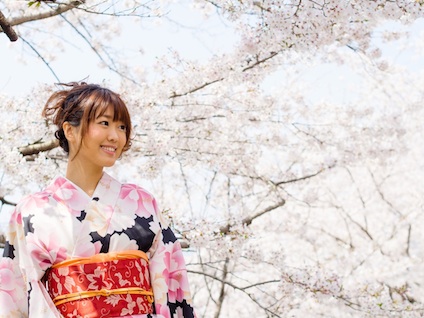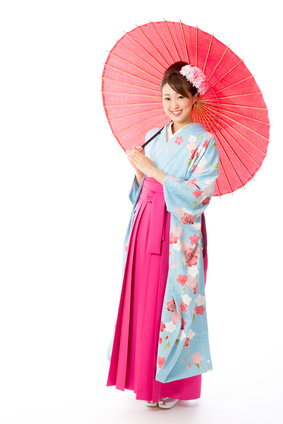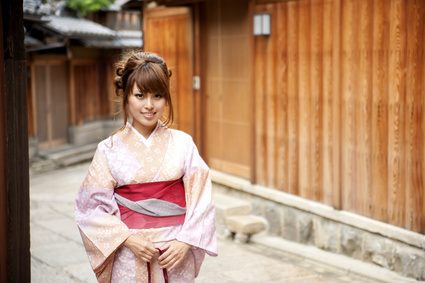
When November comes, it obviously become colder outside. Kimonos are clothes made of layers, so they’re thought of as warm, but if it’s cold, it’s cold. Above all else, you won;t look pretty if you’re freezing.
During the season when it’s not yet cold enough to wear a winter coat, a thinner coat is used. They come in a wealth of kinds, but a plain one in, calmly colored, can be used in most situations.
It can’t be used with formal attire, but for a casual kimono can be paired with a haori coat. Long haori, recently in vogue, and old-fashioned shorter ones are treated the same.Different from other kinds of coats, haori can be also worn indoors.
What’s more, some haori don’t have the string around the chest, but the strings can be changed and they’re not in any way worse. The string can be bought in stores with Japanese apparel accesories.
Kimonos and obi belts suited for November come in patterns like fallen leaves or bare trees and other winter-like views, but they all evoke a sad mood. In case you want to appear brighter, since it’s still the end of autumn, chrysanthemum or maple leaves are good as well.

